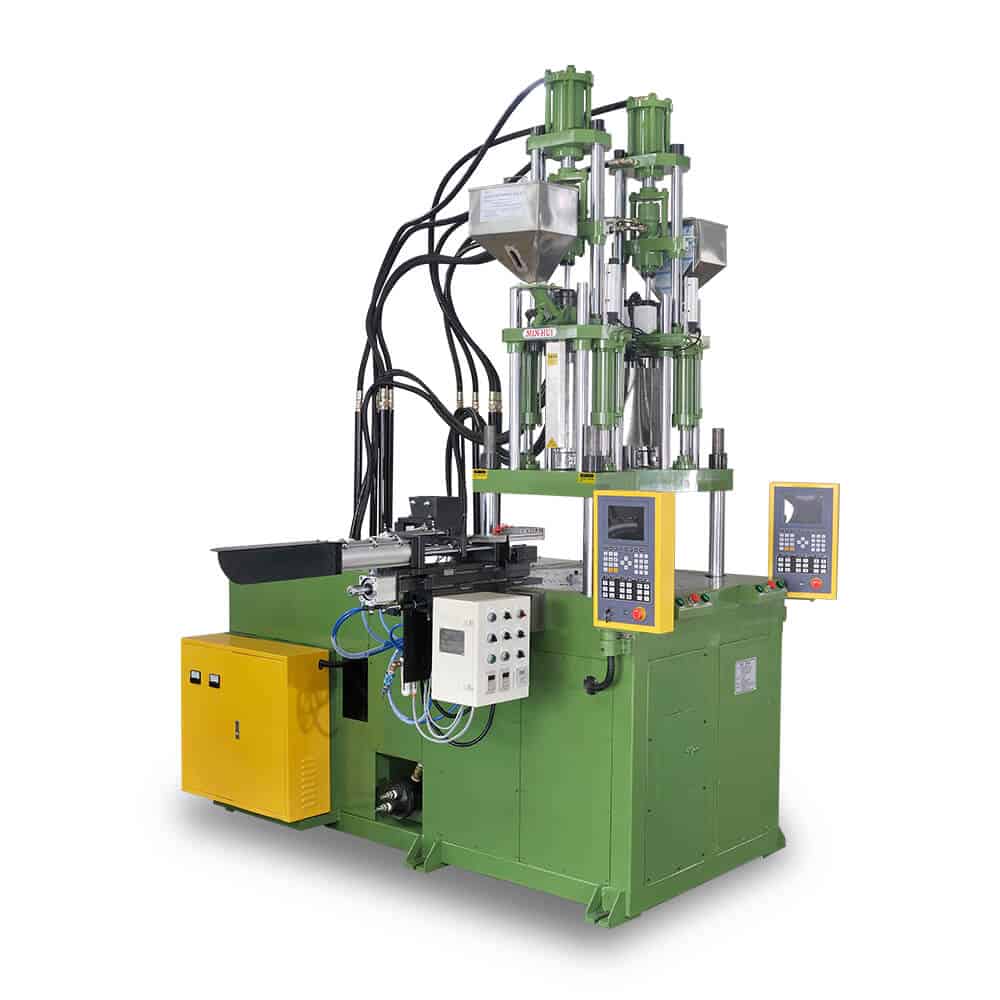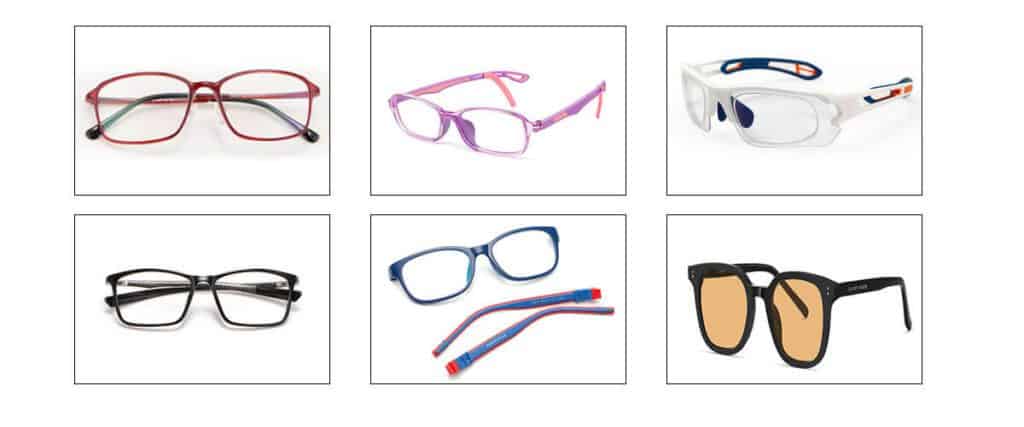Plastic Injection Molding Machine Glass
Plastic injection molding machine glass is suitable for glasses nose pads, glasses nose lobes, glasses frames, glasses brackets, etc.

Rotary Injection Machine's Description
- The primary Servo system can be selected according to the demand, saving energy and power, improving production efficiency, increasing the product qualification rate, and extending the machine’s life.
- Vertical four-column direct-press type mold clamping, one upper mold, double lower mold to achieve more convenient operation, and automation for line planning, increase production capacity.
- Automated, multi-axis robot production can realize unmanned production, injection glasses optical lenses, glasses nose pads, glasses nose drop, glasses frames, glasses frames, glasses legs and other glasses accessories.
Glass Injection Sample Display

The difference between plate glasses and injection glasses
Plastic (chemical) materials.
Plastic materials used in the manufacture of frames are a wide variety, but with different production and manufacturing processes can be broadly divided into two kinds of plate frames and injection molding frames.
On the whole, the difference between plate and injection molding is that the plate frame is not easy to fade, not easy to break. Injection molding frame has a great variety of shapes, more three-dimensional. Plate frame is expensive in labor, the relative manufacturing cost is much higher than injection molding frame.
With the continuous progress of technology, there will be more new materials, but there is no one material so far. The glasses frame is called perfect because the requirements of the frame are.
- Good elasticity, comfortable to wear, not easy to break.
- High hardness, not deformed.
- Heat (about 70-100 degrees) can be concentrated (suitable for lenses).
- Good affinity for dyeing and coloring (easy to process dyeing, and not easy to lose color).
- Heat resistance (anti-high temperature).
- Good corrosion resistance (will not be corroded by sweat acid or grease, etc.)
- Does not irritate the skin.
The following describes several common plastic materials.
Cellulose.
Cellulose nitrate, commonly known as cellulose, HYATT brothers in 1869 first made the earliest thermosetting plastic. Because of its low ignition point very easy to burn, the purpose of Europe and the United States is to prohibit the use of the frame.
Physical properties.
A. High hardness and scratch resistance.
B. High skin stability and secretions, not easy to erode or erode.
C. stable to water.
D. flammable.
E. easily dissolved by organic solvents such as acetone.
Acetate.
Acetate fiber is a raw material invented to improve the shortcomings of CELULU flammable. It is not easy to burn is its most important feature, as for other properties worse than CELULU.
However, this shortcoming can be made up by processing or other methods, so after processing the finished product, its appearance is almost indistinguishable from that of CELULU products.
Acetate frames are divided into two types: one is the glasses milled from acetate sheets, called plate frames. The other is the acetate particles extruded by injection molding machines, called injection frames.
Plate frame: chemically treated with cotton wool (leftover material after the first cotton ginning) into powder, dissolved in acetic acid, added with plasticizer and certain dyes, made into large plates under high temperature and pressure after the filtering procedure.
Finally dried and processed to remove free acetone, cut into strips or slices of appropriate size, so commonly known as plates, and finally made into eyeglasses.
Following characteristics:
A. Not easy to burn.
B. small specific gravity, 1.28-1.32 g/cm3.
C. almost not subject to ultraviolet radiation and discoloration.
D. Hardness, gloss, and durability. Not easy to bake processing, the temperature should be at 115-130 degrees, too high will be foaming.
E. the style is more beautiful, not easy to deformation after wearing.
Injection molding frame: save raw materials, mass production, so the cost is lower, the price is lower than the plate. But the firmness is not as strong as the plate frame. The current popular plastic frame is mostly this type of material.
In addition, there are acrylic, optical plastic, nylon, cellulose propionate resin, carbon fiber, and other materials, not detailed.


